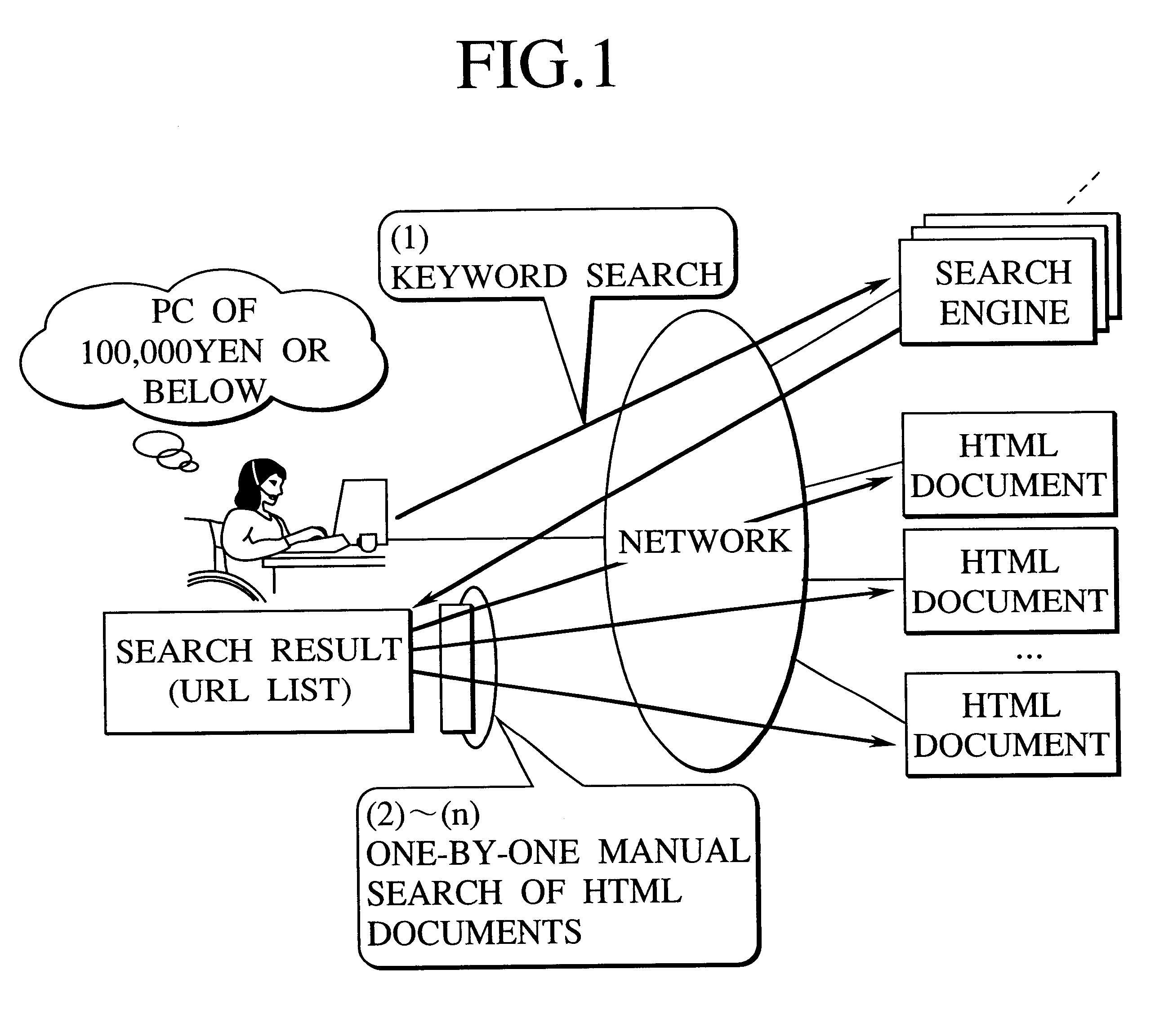Integrated retrieval scheme for retrieving semi-structured documents
a semi-structured document and integrated retrieval technology, applied in the field of retrieval techniques, can solve the problems of inability to collectively retrieve information from across a plurality of html documents, users must spend a lot of time and labor before getting necessary information, and need long time and labor to obtain necessary information
- Summary
- Abstract
- Description
- Claims
- Application Information
AI Technical Summary
Problems solved by technology
Method used
Image
Examples
first embodiment
An HTML document information integrated retrieval apparatus of the first embodiment according to the present invention concerning semi-structured document information retrieval scheme will be explained with reference to FIGS. 5 to 16.
HTML documents are scattering over open networks and have individual document structures, presentation styles, and partial structures such as tables containing different elements. The first embodiment retrieves required information involved in various HTML documents and provides a user with a collective search result in presentation styles that are optimum for the user.
A concept regarding the presentation styles and terms used for the embodiments will be explained first. HTML documents employ different presentation styles to express even the same meaning. For example, the price of a product is expressed like ".Yen.1,000," "one thousand yen," or "1,000 yen" depending on the writers of HTML documents. Terms employed by this specification will be explained...
second embodiment
The second embodiment employs the same concept and terms as the first embodiment. As explained above, HTML documents employ various presentation styles depending on their writers and users. For example, some HTML documents express Kanagawa prefecture, an area in Japan, as "Kanagawa-ken" and others simply as "Kanagawa."
"Kanagawa-ken" is a domain of a with-ken presentation style when expressing an area. "Chinese food" is a domain of a with-food presentation style when expressing a genre. The area and genre form each a domain group. If a user enters a query statement with "Kanagawa-ken" and "Chinese food," this query statement involves user input domains of the with-ken presentation style for area and with-food presentation style for genre. If a search output for a user has "Kanagawa-ken" and "Chinese food," this search output includes user output domains of the with-ken presentation style for area and with-food presentation style for genre. If a search result extracted from an HTML do...
third embodiment
The third embodiment employs template files that are independent of HTML syntax rules, to extract required information item by item from HTML documents, if the HTML documents have items delimited with, for example, tags. The third embodiment extracts information item by item from HTML documents only by preparing template files that define the items from which information is extracted. The template files can easily be prepared according to target HTML documents and are visually understandable. Consequently, the third embodiment easily and flexibly extracts information item by item from HTML documents.
PUM
 Login to View More
Login to View More Abstract
Description
Claims
Application Information
 Login to View More
Login to View More - R&D
- Intellectual Property
- Life Sciences
- Materials
- Tech Scout
- Unparalleled Data Quality
- Higher Quality Content
- 60% Fewer Hallucinations
Browse by: Latest US Patents, China's latest patents, Technical Efficacy Thesaurus, Application Domain, Technology Topic, Popular Technical Reports.
© 2025 PatSnap. All rights reserved.Legal|Privacy policy|Modern Slavery Act Transparency Statement|Sitemap|About US| Contact US: help@patsnap.com



